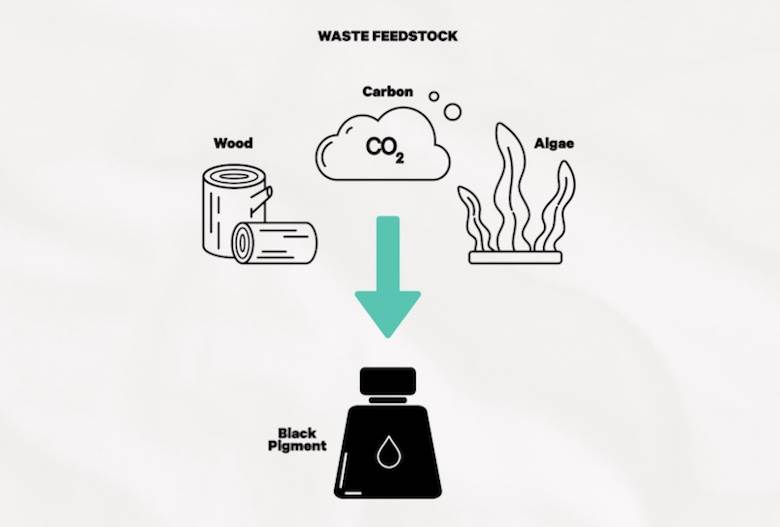Black pigments from waste tested for dope dyeing

A new pilot programme seeks to further develop and scale waste-derived black pigments for the dope dyeing of manmade cellulosic fibres (MMCFs) and recycled polyethylene terephthalate (rPET) yarns.
Bringing together global partners such as supply chain initiative Fashion for Good, fashion groups Kering and PVH, plus MMCF producer Birla Cellulose, manufacturer Paradise Textiles and eco-minded disruptors Graviky Labs, Living Ink and Nature Coatings, the project will focus on testing black pigments from industrial carbon emissions, waste algae and wood waste.
The three latter firms’ technologies, which have previously achieved black pigments from waste feedstocks, have thus far only been harnessed for printing applications, Fashion for Good said. Birla and Paradise will support these start-ups with their respective technical expertise relating to dope dyed MMCFs and both “sustainable” and performance fabrics, it continued. (Paradise will focus on rPET yarns.)
The first phase of the pilot is scheduled to run until mid-2022, during which time the collaborators will have opportunity to evaluate the viability of the pigments’ performance, colour fastness, wearability and “impact”, following Birla and Paradise’s dope-dyeing of the fibres and yarns for which they will respectively be responsible.
After this, all successful formulations will be trialled in larger production runs where fabrics will be dyed, Fashion for Good added. Notably, test variables including affinity, colour and light fastness, as well as the tensile strength of the fibres and yarns, will be measured against dope dyeing with industry standard synthetic yarns at this stage.
Passed formulations will then be progressed from pilot to textile production, with the partners’ long-term objective being to have all successful technologies reach a commercial-ready scale for ultimate integration in the textile and apparel value chain.
Managing director at Fashion for Good, Katrin Ley, commented: “Collaboration is key to making a step change in replacing the abundantly used harmful dyes in the industry, of which black is dominating. We are very excited to be able to support this first-of-its-kind collaborative pilot aiming to validate three technologies that will enable the industry to switch to more sustainable (black) dye chemistry.”
Read about the movement towards greener chemistry in WSA here, as well as how algae can be tapped to make fibres, finishes and dyes for textiles here.
Image: Fashion for Good.








